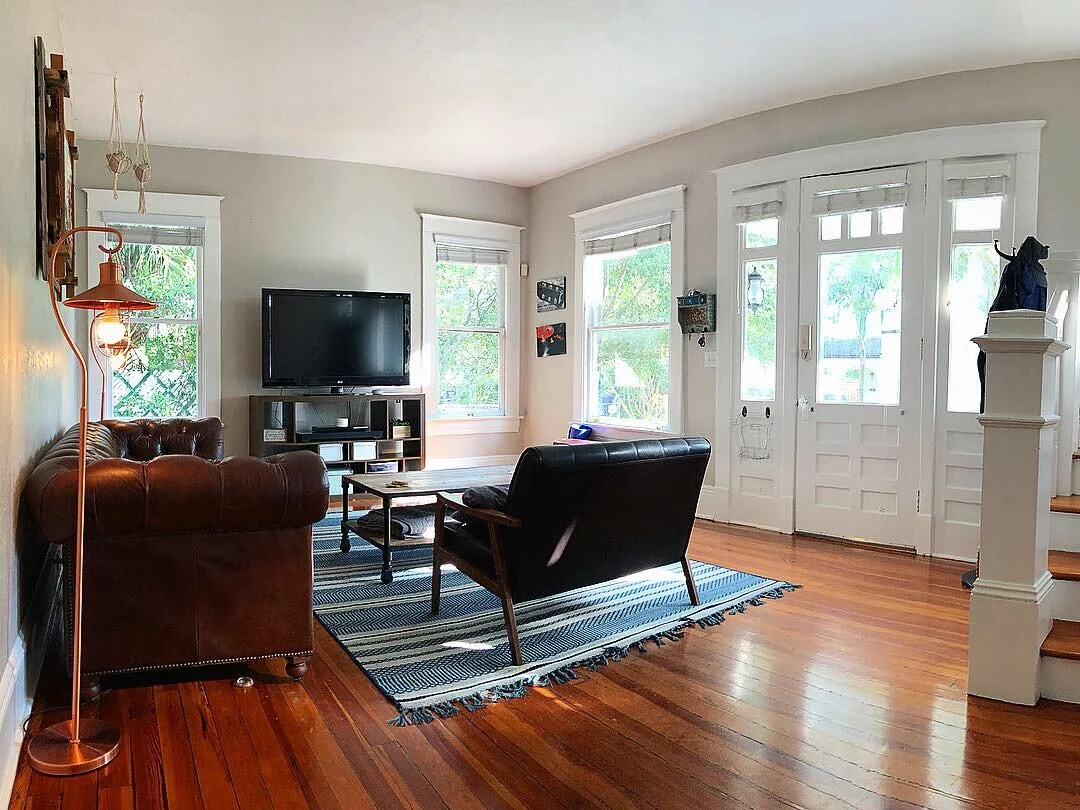Satin vs. Matte vs. Gloss Paint Finish: The Ultimate Guide of Uses
If you’re painting around your home, you need to know what kind of paint finish to choose depending on what room you’re painting, what it is you’re painting, and a whole variety of other factors. Satin, matte, and gloss finishes drastically change the way a room looks, so you’ll want to know everything about each kind before you decide!
Matte Finish
The most straightforward of finishes is matte, also known as a flat finish. These finishes have the lowest amount of gloss, and therefore reflect the least amount of light. As the name flat would suggest, this finish doesn’t have a shine to it.
The benefits of a matte finish
First, a matte finish absorbs the most amount of light compared to the other types of finishes. This makes matte paint perfect for hiding scratches, bumps or other surface imperfections. They look wonderful in rooms with lots of natural light. Matte finishes are also the cheapest kind of paint finish, and are very easy to touch up.
Where to use a matte finish
Bedrooms and studies
Ceiling finishes
Areas with minimal foot traffic
Places it is possible to repaint
The downsides of a matte finish
Cleaning surfaces with a matte finish can be extremely difficult without removing the paint. They are the least durable finish, but also the least expensive. Dirt tends to hold well on matte, which is unfortunate combined with the frustration that comes with trying to clean walls and other areas with a matte paint finish.
Thankfully, some companies such as Sherwin Williams and Behr make slightly more durable versions of matte finishes that make cleaning easier. You could also consider buying eco-conscious paints for the interior of your home.
Satin Finish
Next up, we have the satin and eggshell finishes. A medium sheen finish, these types of paint finishes offer a slight reflection of light. They are usually described as smooth, silky, and velvety.
The benefits of a satin finish
There are many reasons to choose a satin finish for a specific room. Satin and eggshell finishes are more durable than matte finishes, and the paint will hold up if they need to be cleaned. Typical household cleaner won’t remove it, making it easier to maintain. The shine from a satin finish can make the chosen color of paint vibrant, and pop more.
Where to apply a satin finish
High traffic areas, such as entryways, hallways, and staircase walls
Bathrooms, as cleaning won’t damage the finish
Kitchens, for the same reason as bathrooms
Children’s rooms
Disadvantages of satin or eggshell finishes
One of the advantages of satin and eggshell finishes is also their downside. The pearly sheen associated with the finish isn’t suited for dings or imperfections on a wall. Additionally, brush strokes and roller misapplication will be visible when the paint dries. If you try to touch up these finishes, it will be very apparent and difficult to blend in.
Prepping for satin and eggshell finishes take more time, so you’re better off hiring a professional company to make sure the paint is applied properly.
Gloss Finish
Finally, we have gloss and semi-gloss finishes. These bright, shiny finishes offer wonderful highlights, and robust durability. They are also, on average, the most expensive kinds of paint finishes that you can buy.
Benefits of gloss finishes
Bold and vibrant, semi-gloss and gloss finishes truly brighten up a room. These finishes look very sleek and can give rooms an air of sophistication. Out of all the finishes, semi-gloss and gloss are the most durable. They’ll stand up to heavy scrubbing and cleaning. As an added bonus, these paint finishes are resistant to moisture.
Where to apply a gloss finish
Door and window trim, and molding around your home
Kitchens, because of its moisture resistance
Kids rooms, due to its durability
Bathrooms
Disadvantages of gloss finishes
Even more so than a satin finish, semi-gloss and gloss finishes will highlight imperfections on the applied surface. Oftentimes, sanding and other prep work is required to create a smooth surface before painting begins. While a seasoned painter may be able to blend satin or eggshell touch-ups, gloss finishes need a full repaint in the case of minor issues. Make sure the first application is done properly by hiring someone with plenty of experience painting.
Combine Finishes
As a general rule, you don’t want to overload one room with a single type of paint finish. Also, when planning out your room, you’ll want finishes next to each other to be one level of shine away from each other. For example, you wouldn’t want a matte wall with gloss trim. However, a satin finish wall with gloss trim would work perfectly! Keep these rules in mind as you plan. A great interior paint job can increase the value of your home.
To be sure you’re choosing the right combination of finishes for your interior painting project, it’s best to hire a professional painting company. Old Crow Painting provides expertise in both service and quality to your home. Give us a caw today for a free estimate on your project!

